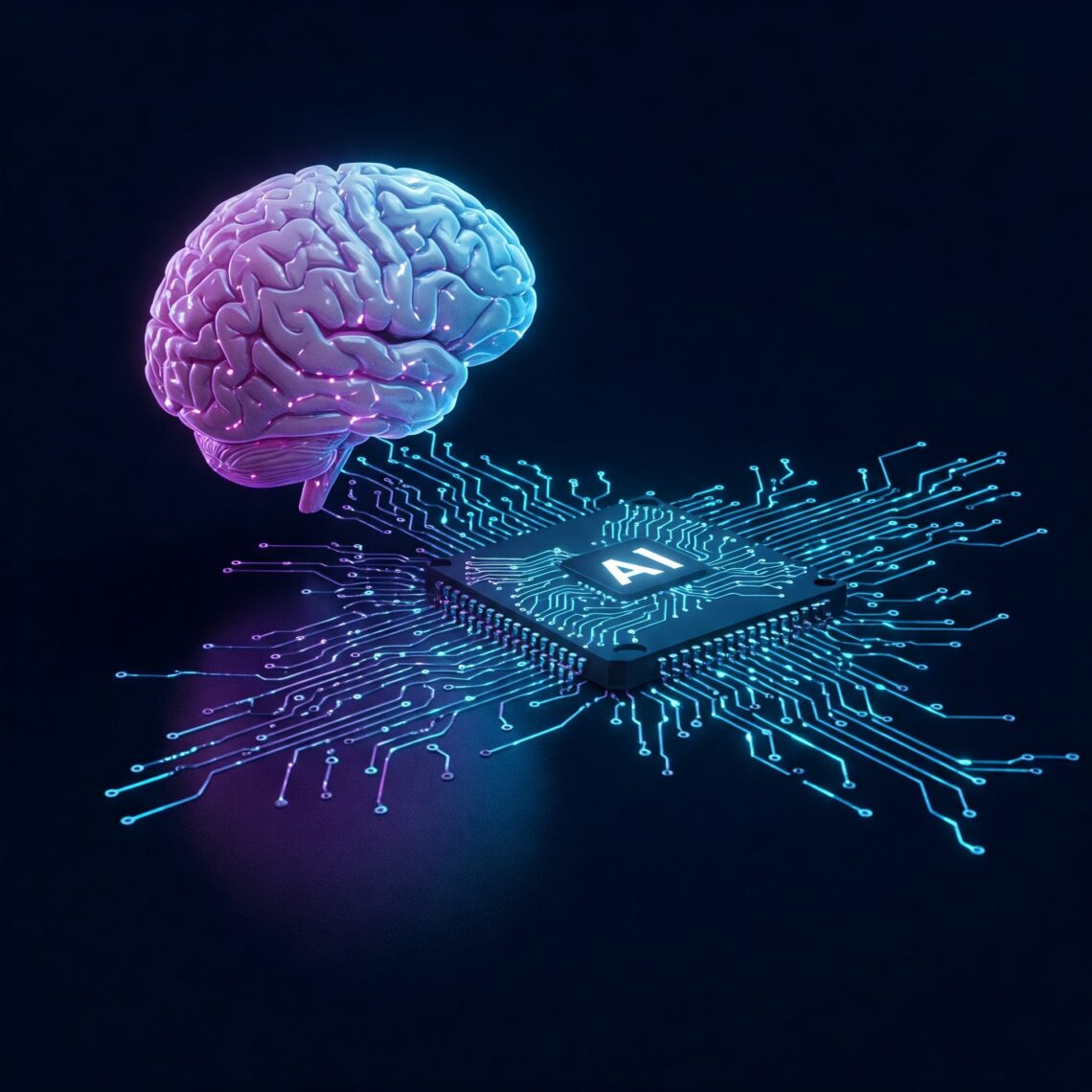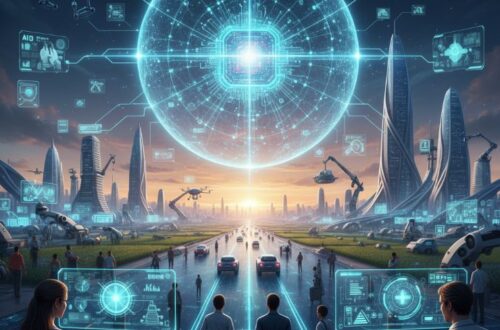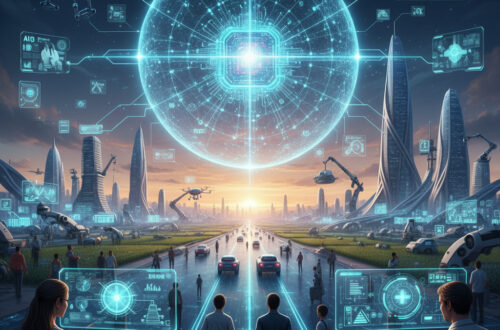In an era defined by rapid technological advancements, few concepts have captured the imagination and sparked as much debate as Artificial Intelligence (AI). From self-driving cars to sophisticated recommendation systems, AI is no longer a futuristic fantasy but a tangible force reshaping our world. Understanding its intricacies is crucial for navigating the evolving digital landscape. This comprehensive article delves deep into the realm of AI, exploring its definition, mechanisms, diverse types, and the historical journey that paved its way.
What is Artificial Intelligence (AI)?
At its core, Artificial Intelligence (AI) refers to the ability of computer systems to perform tasks that typically require human intelligence. This encompasses a wide range of capabilities, including learning, problem-solving, decision-making, understanding natural language, perceiving the environment, and even exhibiting creativity. Unlike traditional software programs that follow pre-programmed instructions, AI systems are designed to learn from data, adapt to new information, and improve their performance over time.
Think of it as imbuing machines with the capacity to “think” and act in a way that mimics human cognitive functions. This doesn’t necessarily mean replicating human consciousness or emotions (at least not in its current advanced forms), but rather creating systems that can intelligently process information and achieve specific goals. The ultimate aim of AI research is to create intelligent agents – systems that can reason, plan, and act autonomously in complex environments.
How Does AI Work?
The magic behind AI lies in a combination of sophisticated algorithms, vast amounts of data, and powerful computing resources. While the specific techniques vary depending on the type of AI and the task it’s designed for, several fundamental principles underpin its operation:
- Machine Learning (ML):This is a core subset of AI that focuses on enabling computers to learn from data without being explicitly programmed. ML algorithms identify patterns, make predictions, and improve their accuracy as they are exposed to more data. Common ML techniques include:
- Supervised Learning: The algorithm learns from labeled data, where the input and the desired output are provided. For example, training an email spam filter with emails labeled as “spam” or “not spam.”
- Unsupervised Learning: The algorithm learns from unlabeled data, identifying hidden patterns and structures. Clustering similar customer behaviors or segmenting images are examples.
- Reinforcement Learning: The algorithm learns through trial and error, receiving rewards or penalties for its actions in an environment. This is often used in training robots or game-playing AI.
- Deep Learning (DL): A subfield of machine learning inspired by the structure and function of the human brain. Deep learning utilizes artificial neural networks with multiple layers (hence “deep”) to analyze complex data like images, audio, and text. It has been instrumental in breakthroughs in areas like image recognition, natural language processing, and speech recognition.
- Natural Language Processing (NLP): This branch of AI focuses on enabling computers to understand, interpret, and generate human language. NLP powers applications like chatbots, language translation tools, and sentiment analysis.
- Computer Vision: This field equips computers with the ability to “see” and interpret visual information from images and videos. It involves tasks like object detection, facial recognition, and image analysis.
- Rule-Based Systems: These older AI systems rely on a set of predefined rules to make decisions. While less flexible than machine learning approaches, they are still used in specific applications with well-defined logic.
The process typically involves feeding large datasets to AI algorithms, allowing them to learn underlying patterns and relationships. Once trained, the AI model can then be used to make predictions, classify new data, or generate responses based on the learned knowledge. The performance of an AI system is heavily dependent on the quality and quantity of the training data.
Types of Artificial Intelligence (Explained):
AI is not a monolithic entity. It exists in various forms, often categorized based on their capabilities and functionalities. Here’s a breakdown of the key types:
Based on Capabilities:
- Artificial Narrow Intelligence (ANI) or Weak AI: This is the most common type of AI today. ANI is designed to perform a specific task or a narrow set of tasks intelligently. Examples include virtual assistants like Siri and Alexa, recommendation engines on e-commerce platforms, spam filters, and self-driving cars (within specific operational domains). While highly capable within their defined scope, ANI systems lack general intelligence and awareness.
- Artificial General Intelligence (AGI) or Strong AI: This is a hypothetical type of AI with human-level cognitive abilities. An AGI would be able to understand, learn, and apply knowledge across a wide range of tasks, just like a human. Currently, AGI does not exist, and it remains a significant research goal and a subject of much debate.
- Artificial Superintelligence (ASI): This is a theoretical form of AI that surpasses human intelligence in all aspects, including creativity, problem-solving, and general wisdom. ASI is often depicted in science fiction and raises significant ethical and societal considerations.
Based on Functionality:
- Reactive Machines: These are the most basic type of AI. They react to the present situation based on pre-programmed rules and do not have memory or the ability to learn from past experiences. IBM’s Deep Blue, which defeated Garry Kasparov in chess, is an example. It could identify the current board state and make optimal moves based on its rules.
- Limited Memory: These AI systems can store information about recent events and use that memory to make decisions. Most of today’s AI applications, including self-driving cars (remembering the speed and distance of other vehicles) and recommendation systems (tracking user preferences), fall into this category. However, their memory is transient and task-specific.
- Theory of Mind: This is a more advanced and currently non-existent type of AI that would understand that others (humans, other agents) have beliefs, desires, intentions, and emotions that can affect their behavior. Achieving “theory of mind” is crucial for building truly sophisticated social AI.
- Self-Awareness: This is the pinnacle of AI development, where a system would have consciousness, self-awareness, and an understanding of its own existence. This type of AI is purely theoretical and raises profound philosophical questions.
How Old Computer Technology Comes to AI:
The journey from early computational concepts to the sophisticated AI of today has been a gradual yet transformative process, spanning decades and involving numerous breakthroughs:
- Early Foundations (Pre-1950s): The seeds of AI were sown with the development of early computers and theoretical work in logic and computation. Alan Turing’s concept of the “Turing Machine” and his “Turing Test” (proposed in 1950 as a way to assess a machine’s ability to exhibit intelligent behavior equivalent to, or indistinguishable from, that of a human) laid crucial groundwork.
- The Dartmouth Workshop (1956): Considered the birth of AI as a formal field, this workshop brought together researchers who believed that “every aspect of learning or any other feature of intelligence can in principle be so precisely described that a machine can be made to simulate it.” Early enthusiasm led to significant funding and research in areas like symbolic reasoning and problem-solving.
- The Rise of Rule-Based Systems (1970s-1980s): Expert systems, which used human-crafted rules to solve specific problems, gained prominence. These systems found applications in fields like medical diagnosis and financial analysis. However, their limitations in handling complex and uncertain situations led to the “AI winter” of the late 1980s.
- The Statistical Revolution (1990s-2010s): A shift towards statistical methods and machine learning algorithms revitalized the field. Increased computing power and the availability of larger datasets enabled the development of more robust and adaptable AI systems. Algorithms like support vector machines, decision trees, and Bayesian networks achieved significant success in various applications.
- The Deep Learning Era (2010s-Present): The advent of deep learning, fueled by advancements in hardware (like GPUs) and the explosion of data, has led to unprecedented breakthroughs in areas like image recognition, natural language processing, and speech recognition. Deep neural networks have demonstrated remarkable capabilities in learning complex patterns from vast amounts of unstructured data.
Throughout this evolution, advancements in computer architecture, data storage, and algorithm design have been crucial enablers. The increasing availability of data, driven by the internet and digital technologies, has provided the fuel for machine learning models to learn and improve. The journey of AI is a testament to human ingenuity and a continuous pursuit of creating machines that can augment and enhance our cognitive abilities.
Conclusion:
Artificial Intelligence is a dynamic and rapidly evolving field with the potential to revolutionize nearly every aspect of our lives. From the narrow AI powering our everyday tools to the aspirational goal of artificial general intelligence, understanding the principles, types, and historical trajectory of AI is essential for individuals and organizations alike. As AI continues to mature, it presents both immense opportunities and complex challenges that require careful consideration and responsible development. By demystifying this powerful technology, we can better harness its potential to build a more intelligent and efficient future.




